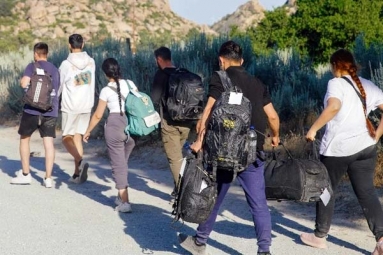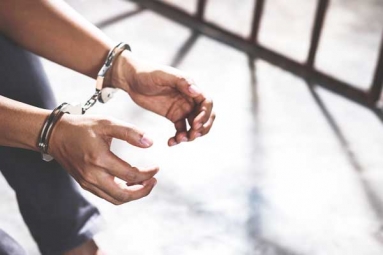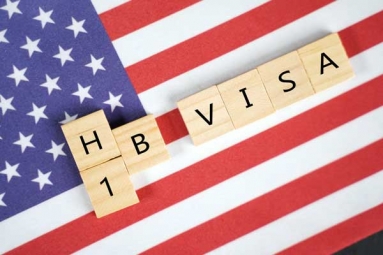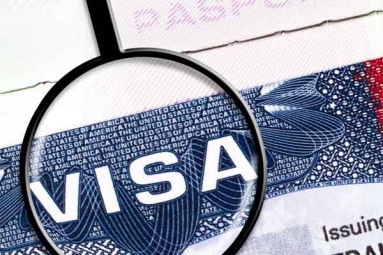Indian American Population Grew by 38 Percent Between 2010-2017: Report
June 19, 2019 06:32
(Image source from: Cristian Garcia)
The population of Indian origin people in the United States is growing gradually year by year.
Between 2010 and 2017, the population of Indians in America grew by 38 percent, a South Asian advocacy group has said in its latest demographic report.
Distinctly the stringent rules by Trump administration are not affecting the Indian’s dream to settle in the U.S.
The South Asian Americans Leading Together (SAALT) in its snapshot, which is based primarily on Census 2010 and the 2017 American Community Survey, said that the population of Indian Americans in 2017 with multiple ethnicities was recorded as 44,03,363, an increase of 38.3 percent from 31,83,063 in 2010.
Immigrant Population
The report said that there are at least 630,000 Indians who are undocumented, a 72 percent increase since 2010, which is attributed to Indian immigrants overstaying a visa.
In 2016, about 250,000 Indians overstayed their visa thus becoming undocumented, it said.
In general, the population of American residents tracing their roots to South Asia grew by 40 percent. In real terms, it increased to 5.4 million in 2017 from 3.5 million in 2010, SAALT said.
Since 2010, followed by Indian (38 percent), the Nepali community grew by 206.6 percent, Bhutanese (38 percent), Pakistani (33 percent), Bangladeshi (26 percent) and Sri Lankan populations (15 percent).
Currently, there are at least 4,300 active recipients of South Asian Deferred Action for Childhood Arrivals (DACA). As of August 2018, there are close to 2,550 active Indian DACA recipients. Of the overall 20,000 DACA eligible Indians, only 13 percent have applied and received DACA.
There are 1,300 DACA recipients from Pakistan, 470 from Bangladesh, 120 from Sri Lanka, and 60 from Nepal, SAALT said.
According to a report by the immigrant population density of the country, the undocumented Bangladeshi immigrants live in New York (19,000); Michigan (4,000); Virginia (3,000); and California (2,000).
South Asians Living in Poverty
According to the report, income inequality has been reported to be the greatest among Asian Americans. Among approximately five million South Asians in the United States, nearly one percent live in poverty.
Besides, the South Asians seeking asylum in the United States over the last 10 years has been in a rise, SAALT said.
Since 2017, 3,010 South Asians have been detained by the U.S. Immigration and Customs Enforcement (ICE). Between October 2014 and April 2018, the U.S. Customs and Border Patrol arrested 17,119 South Asians through border and interior enforcement, it said.
According to SAALT, since 1997, more than 1.7 million dependent spouses of H-1B visa holders have received H-4 visas.
In 2017, 136,000 individuals received H-4 status. Nearly 86 percent of H-4 visa holders are from South Asian countries.
In 2015, the Department of Homeland Security (DHS) granted work authorization to certain H-4 visa holders. As of December 2017, approximately 127,000 visa holders were approved for H-4 EAD, the report said.
Of the approximately five million South Asians in the U.S., nearly 472,000 or 10 percent of them are living in poverty, the report said.
Among South Asian Americans, Pakistanis (15.8 percent), Nepalis (23.9 percent), Bangladeshis (24.2 percent), and Bhutanese (33.3 percent) had the highest poverty rates, it said.
Out of all Asian American groups, Bangladeshi and Nepali communities have the lowest median household incomes, earning USD 49,800 and USD 43,500 respectively, it said.
Nearly 61 percent of non-citizen Bangladeshi American families receive public benefits for at least one of the four federal programs including Temporary Assistance for Needy Families, Supplemental Security Income, Supplemental Nutrition Assistance Programand Medicaid/CHIP, 48 percent of non-citizen Pakistani families and 11 percent of non-citizen Indian families also receive public benefits, the report said.
In the lead up to the 2020 elections, South Asians are turning out to be an increasingly powerful segment of the American electorate, SAALT said.
According to the Current Population Survey (CPS), 49.9 percent of voting-age, Asian American citizens cast a ballot in 2016. In the last decade, the number of Asian American voters has virtually doubled from about two million voters in 2001 to 5 million voters in 2016.
Of these, followed by Pakistanis and Bangladeshis, Indians account for more than 1.5 million, SAALT added.
By Sowmya Sangam



















